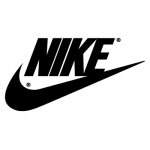Recently, the New Jersey nets announced a move to Brooklyn. With that announcement, they revealed the branding for the new Brooklyn Nets. The logo was a throwback to the days of the sky hook and short shorts and it looks, in my opinion, really nice. However, there was a lot of controversy surrounding this logo because it was said that it was designed by rap mogul and entreprenuer Jay-Z.
As far as I was concerned, H.O.V. designed a good logo that was simple and extremely memorable but there were cries across the internet of “Jay-Z doesn’t know how to use Illustrator,” “He isn’t pushing pixels around,” and “Jay-Z isn’t a designer.” This made me start thinking more about what, exactly, constitutes being a designer.
So, if design is all about solving problems, that means that the essence of the design is the thought. The thought needed to solve the problem at hand. Whether or not Jay-Z even has Illustrator on a computer in his house is irrelevant. The design of the new Brooklyn Nets logo was his brainchild, so it was his design. At least in this instance, Jay-Z is a designer. Even if he has to communicate his idea to a production artist, it’s his idea and his design. This should lend to a point, also, that just because you know how to use Photoshop or Illustrator, that doesn’t make you a designer. You can be the best Photoshop user in the world, but without an understanding of design or the ability to properly come up with creative solutions to problems you are, at best, a production artist.
This entire arguement lends itself to a perspective of designers being pompous and conceited. This is a serious problem within the design community. I won’t go in to it deeply here, but I will expand on this idea in a later post. The crux of this argument is that designers have a stigma of holding to a belief that only designers can design.
The truth of the matter is, everyone can design. We all have the capability within ourselves to come up with a creative thought and, at least attempt to, implement it in the world. The breakdown comes between creating a design and being a designer. Being a designer should be considered more as a lifestyle than a job. Its about the continual practice in honing one’s craft and coming up with new and inventive ways to solve problems within a certain set of constraints.

“Remind yourself. Nobody built like you, you design yourself.” – Jay-Z
